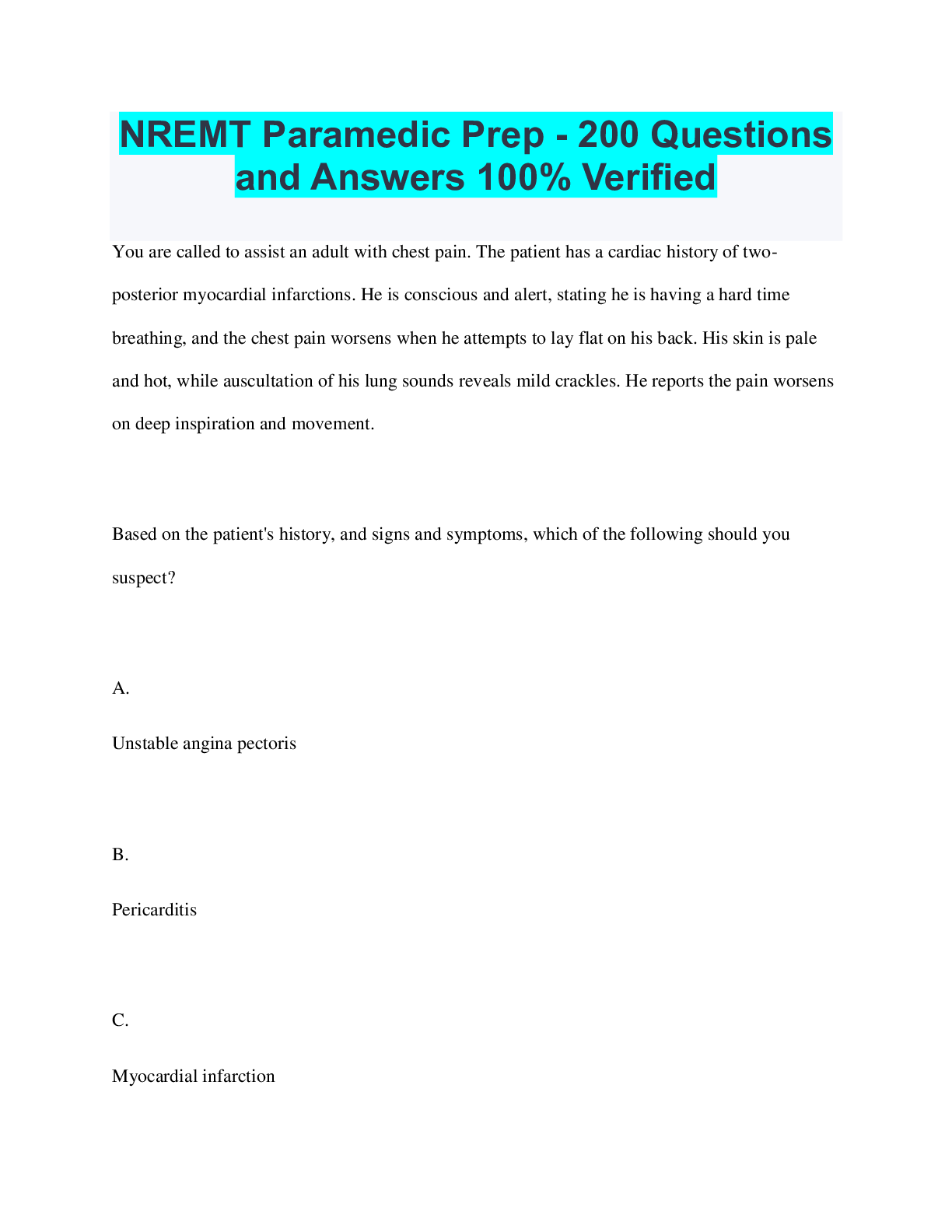Health Care > QUESTIONS & ANSWERS > NREMT Paramedic Prep - 200 Questions QUESTIONS AND ANSWERS(SCORES 100%) (All)
NREMT Paramedic Prep - 200 Questions QUESTIONS AND ANSWERS(SCORES 100%)
Document Content and Description Below
NREMT Paramedic Prep - 200 Questions You are called to assist an adult with chest pain. The patient has a cardiac history of two-posterior myocardial infarctions. He is conscious and alert, stating... he is having a hard time breathing, and the chest pain worsens when he attempts to lay flat on his back. His skin is pale and hot, while auscultation of his lung sounds reveals mild crackles. He reports the pain worsens on deep inspiration and movement. Based on the patient's history, and signs and symptoms, which of the following should you suspect? A. Unstable angina pectoris B. Pericarditis C. Myocardial infarction D. Cardiomyopathy Correct Answer: B. You are the first ambulance to arrive on the scene of a single-car accident. As you approach the scene, you see four patients, two have been ejected from their vehicle, and two are still in the vehicle. What should be your next course of action? A. Call medical control, and advise them of the situation B. Request additional resources, such as fire rescue, and additional ambulances to respond to the scene C. Begin immediate triage and treatment of the two patients ejected first while awaiting fire department response D. Notify the local trauma center so they can prepare for the patients Correct Answer: B. A patient is experiencing a possible neurological emergency from a blunt force closed head injury. He is found to have abnormal pupillary reactions to light and has lost the ability to move his eyes from side to side to follow your finger movements. He is also unable to identify the number of fingers you are holding up. He reports he is able to see the fingers but is not able to focus enough to identify how many fingers are present. Which of the following cranial nerves should you suspect may be involved in his injury? A. Cranial nerves I, V, and VI B. Cranial nerves V and VII C. Cranial nerves IX and X D. Cranial nerves II, III, and IV Correct Answer: D. Simply put, shock is a state of hypoperfusion due to several different causes. Which one of the following types of shock would be considered distributive shock? A. Hypovolemic shock B. Cardiogenic shock C. Anaphylactic shock D. Toxic shock syndrome Correct Answer: C. Which of the following is responsible for initiating the sympathetic response to shock during a traumatic event? A. Increased oxygen level and increased PCO2 B. Increased peripheral vascular resistance and alkalosis C. Decreased perfusion and increased acidosis D. Peripheral vasodilation and increased capillary permeability Correct Answer: C. During which wave, complex, interval, or segment of an electrocardiogram tracing does the absolute refractory period take place in a normally functioning heart? A. S-T segment B. P-R interval C. P wave D. Q-T interval Correct Answer: D. You are preparing to perform synchronized electrical cardioversion with a biphasic defibrillator on your unstable adult patient who is experiencing supraventricular tachycardia at 160 beats per minute on the monitor. Which of the following initial energy settings would be recommended if he was exhibiting a narrow complex, regular supraventricular tachycardia, in which his palpable carotid pulse matches the rhythm on the monitor? A. Synchronized cardioversion at 50-100 joules B. Defibrillation at 100 joules C. Synchronized cardioversion at 360 joules D. Defibrillation at 360 joules Correct Answer: A. Other than a stroke, what is a common cause of one-sided facial droop and paralysis in an adult patient who exhibits no other neurological findings? A. Amyotrophic lateral sclerosis (ALS) B. Multiple sclerosis C. Huntington's disease D. Bell's palsy Correct Answer: D. You are on-scene with a patient who was struck by a car on her bicycle. She is conscious and alert but has a possible closed right mid-shaft femur fracture. The patient advises you that she is sixteen but does not need parental consent to be treated. Which of the following situations would make this statement true? A. [Show More]
Last updated: 1 year ago
Preview 1 out of 74 pages
Instant download

Buy this document to get the full access instantly
Instant Download Access after purchase
Add to cartInstant download
Reviews( 0 )
Document information
Connected school, study & course
About the document
Uploaded On
Jul 16, 2022
Number of pages
74
Written in
Additional information
This document has been written for:
Uploaded
Jul 16, 2022
Downloads
1
Views
101




 (1).png)
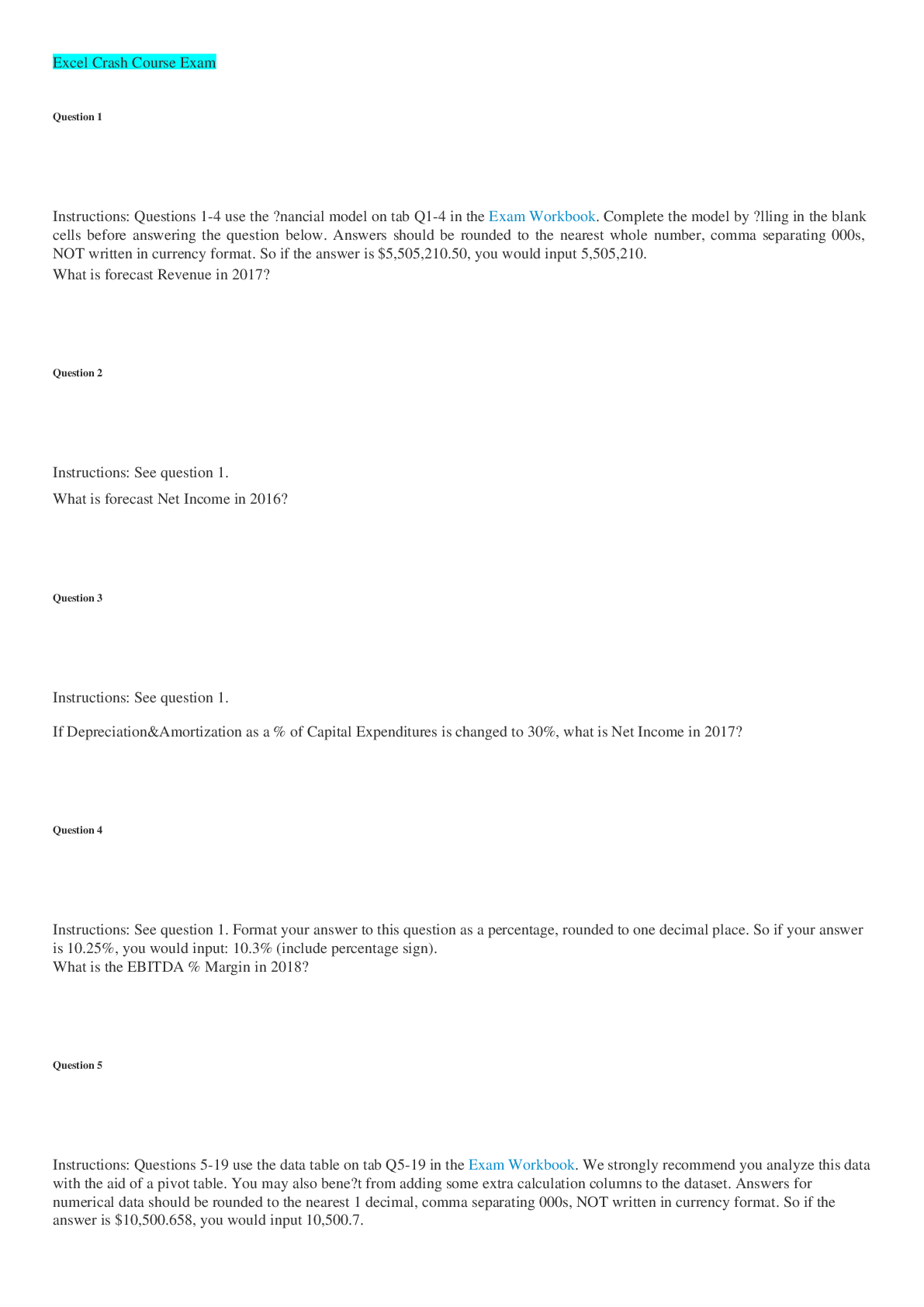
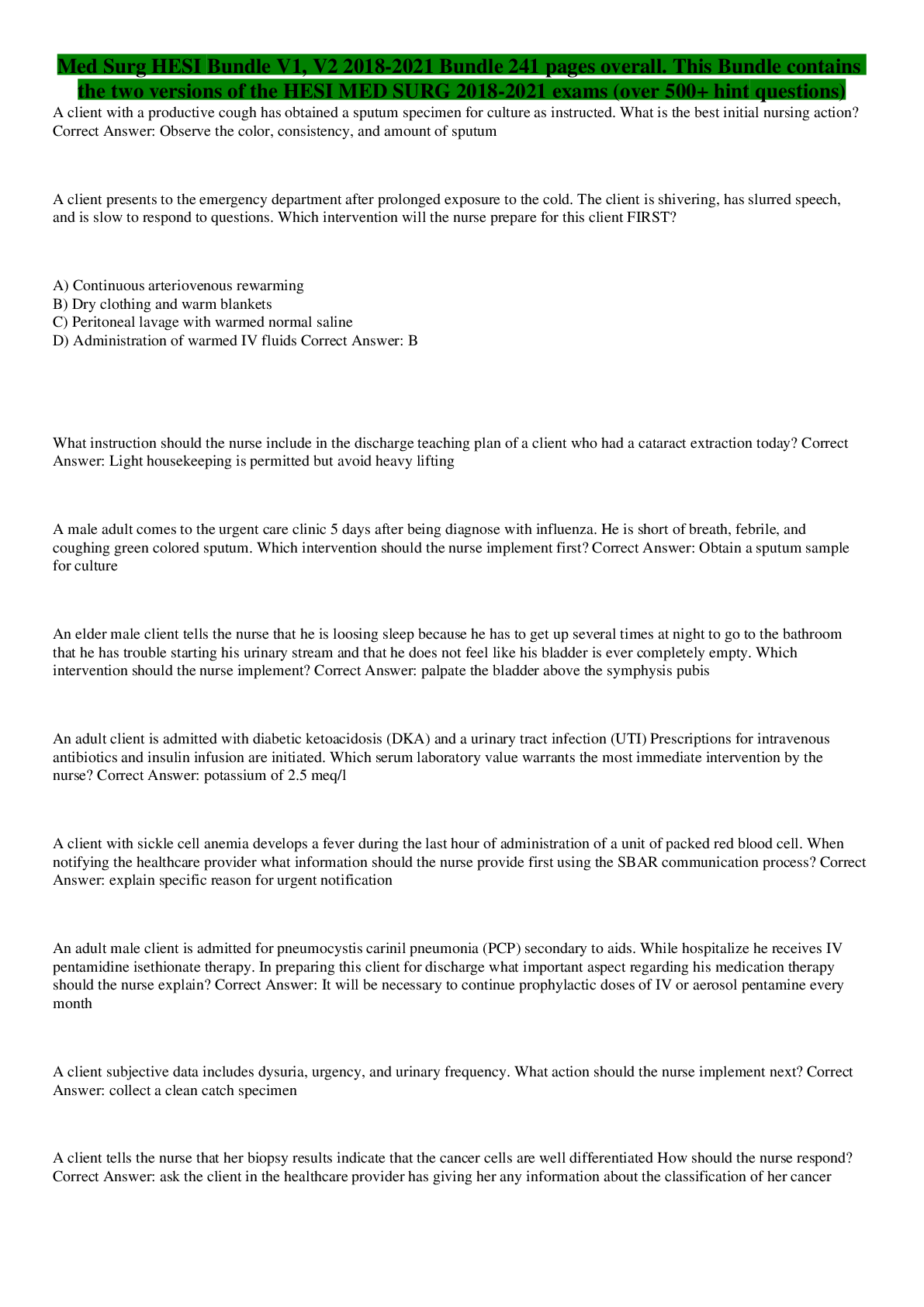

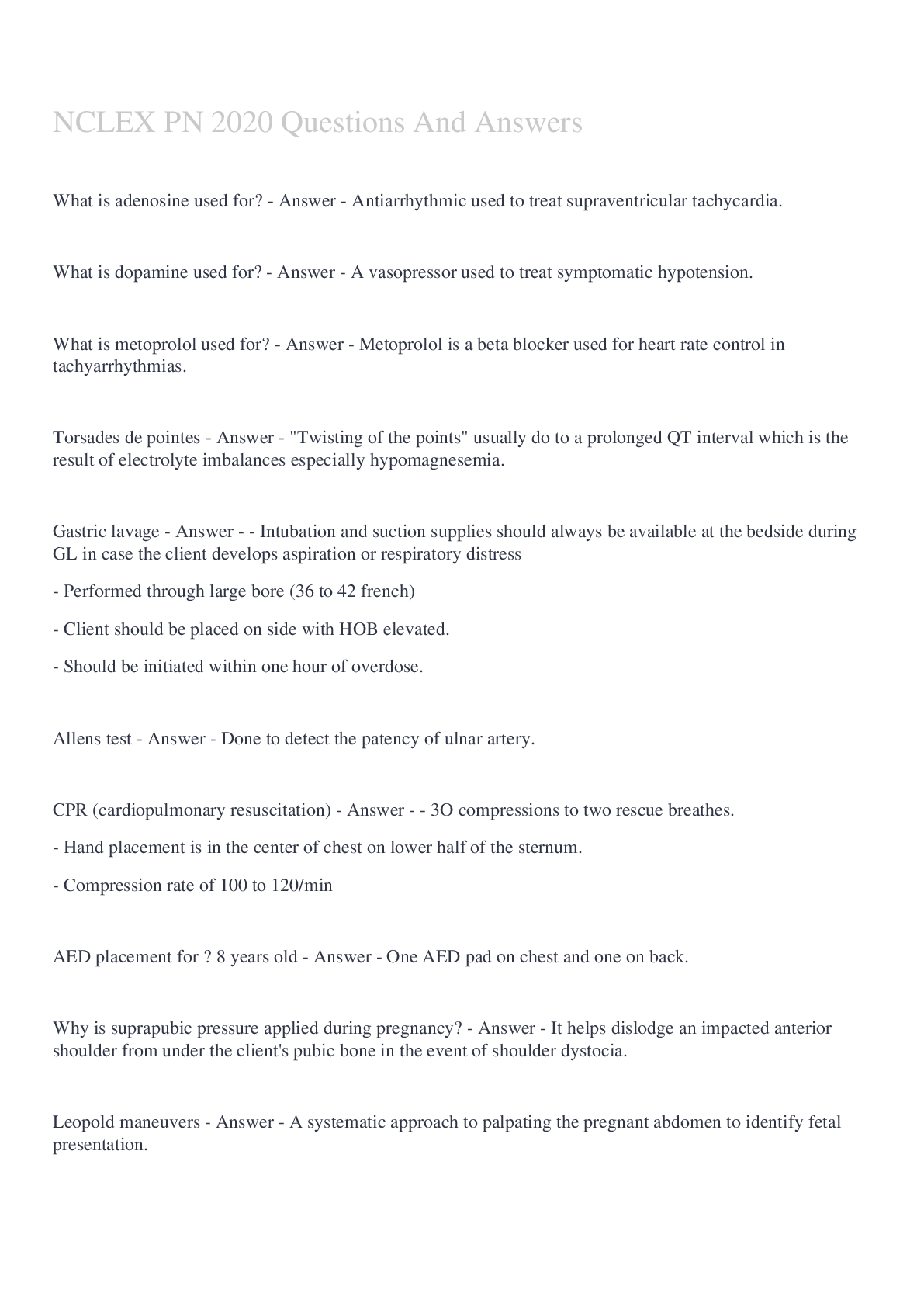
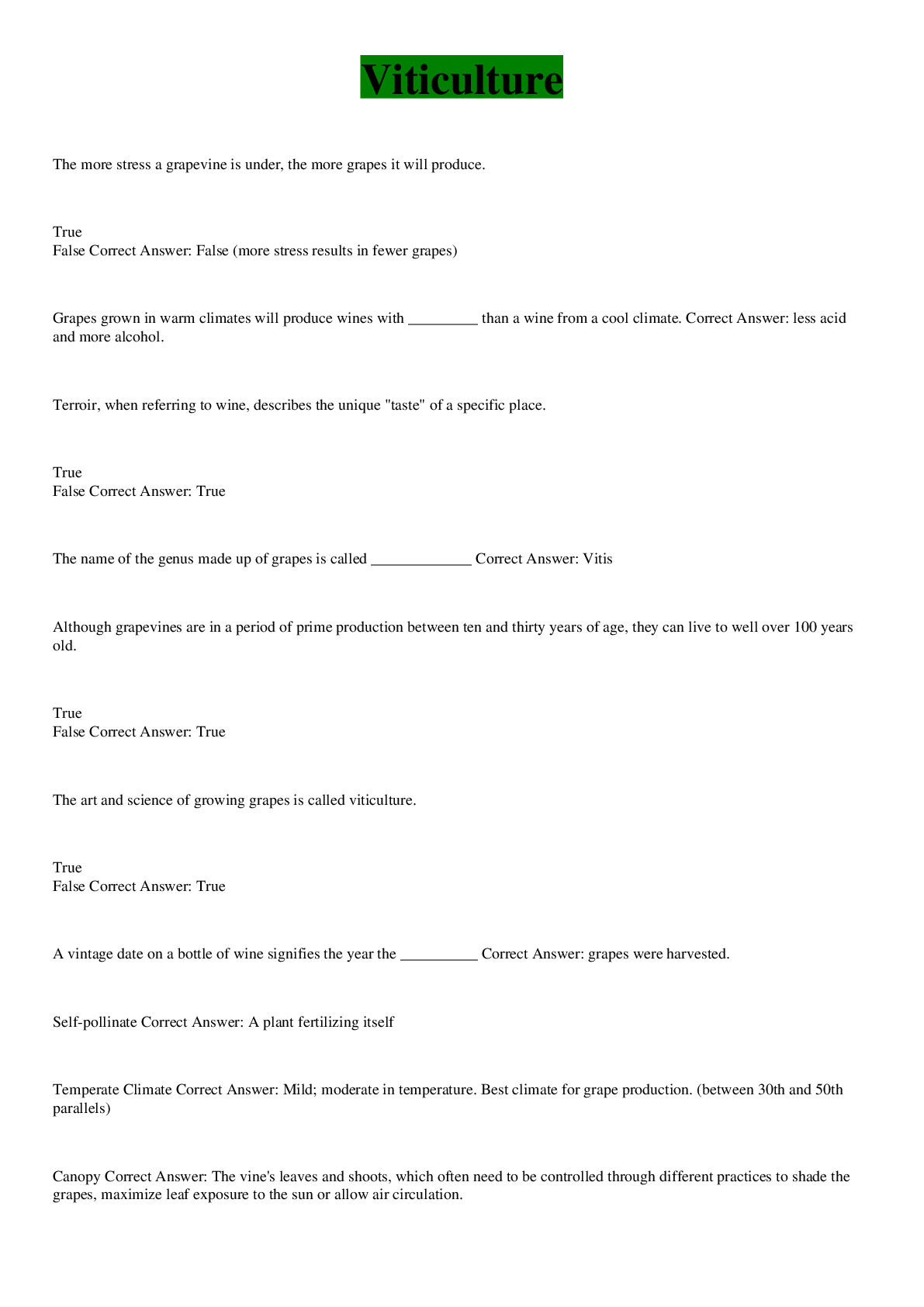
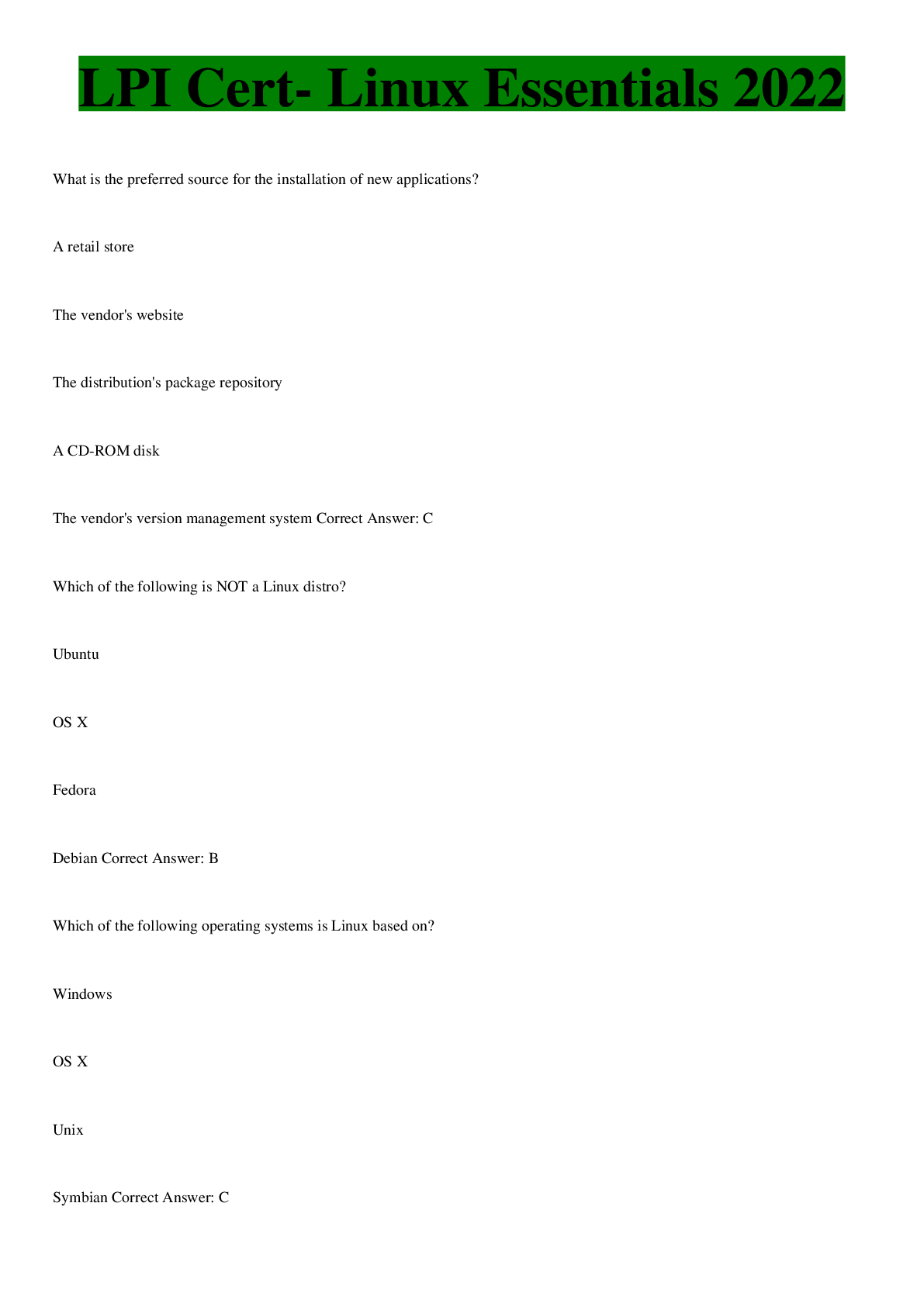
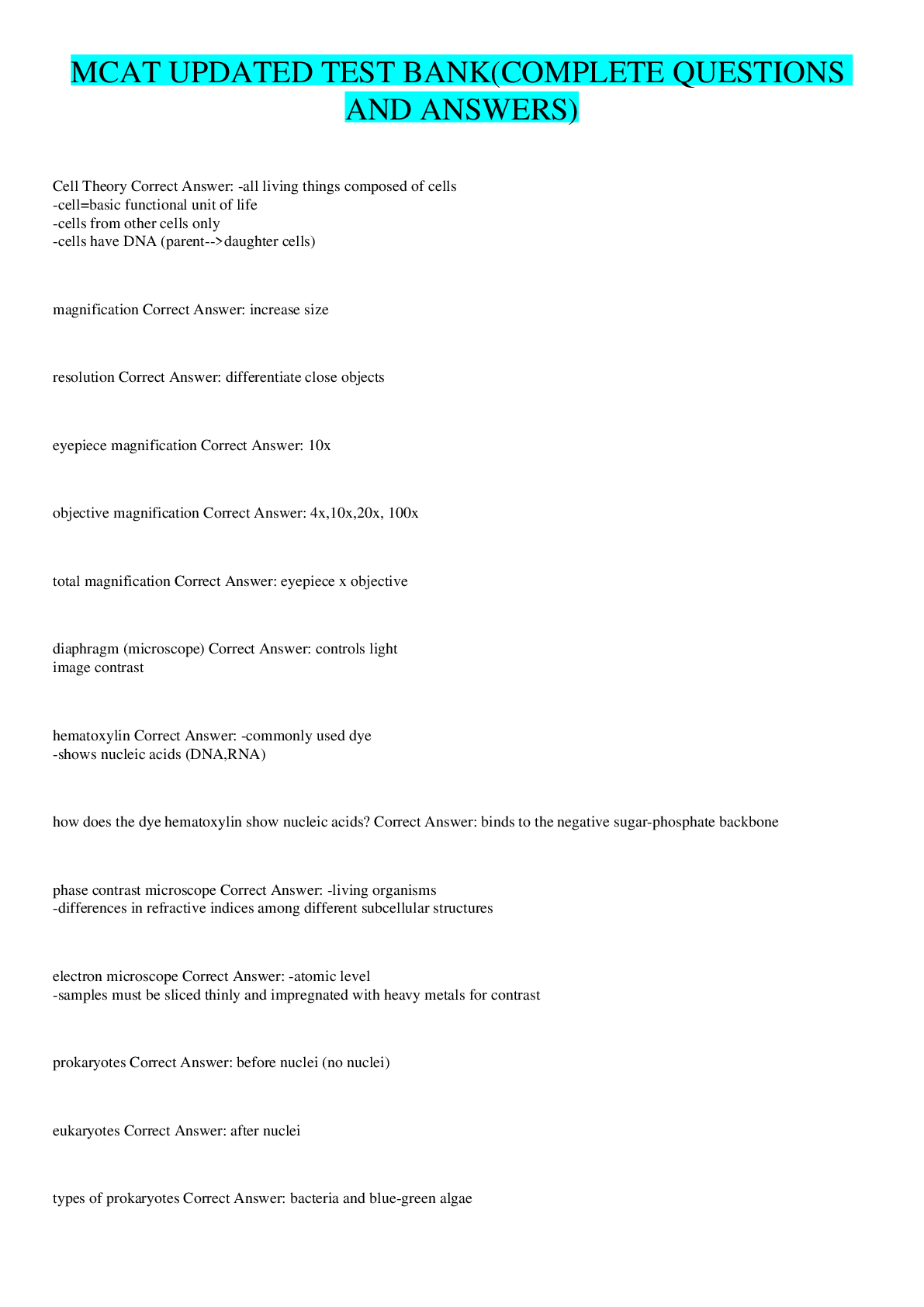

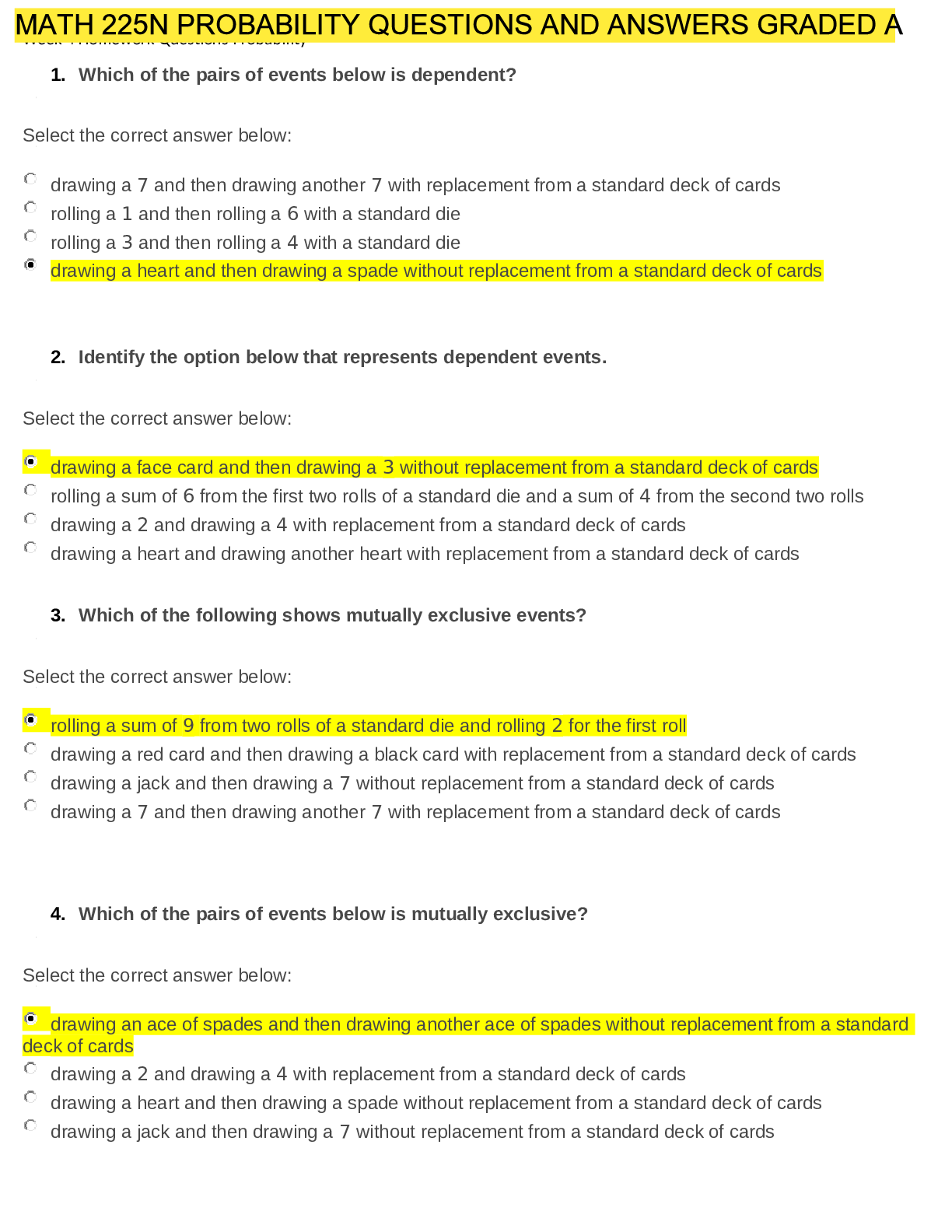
.png)
